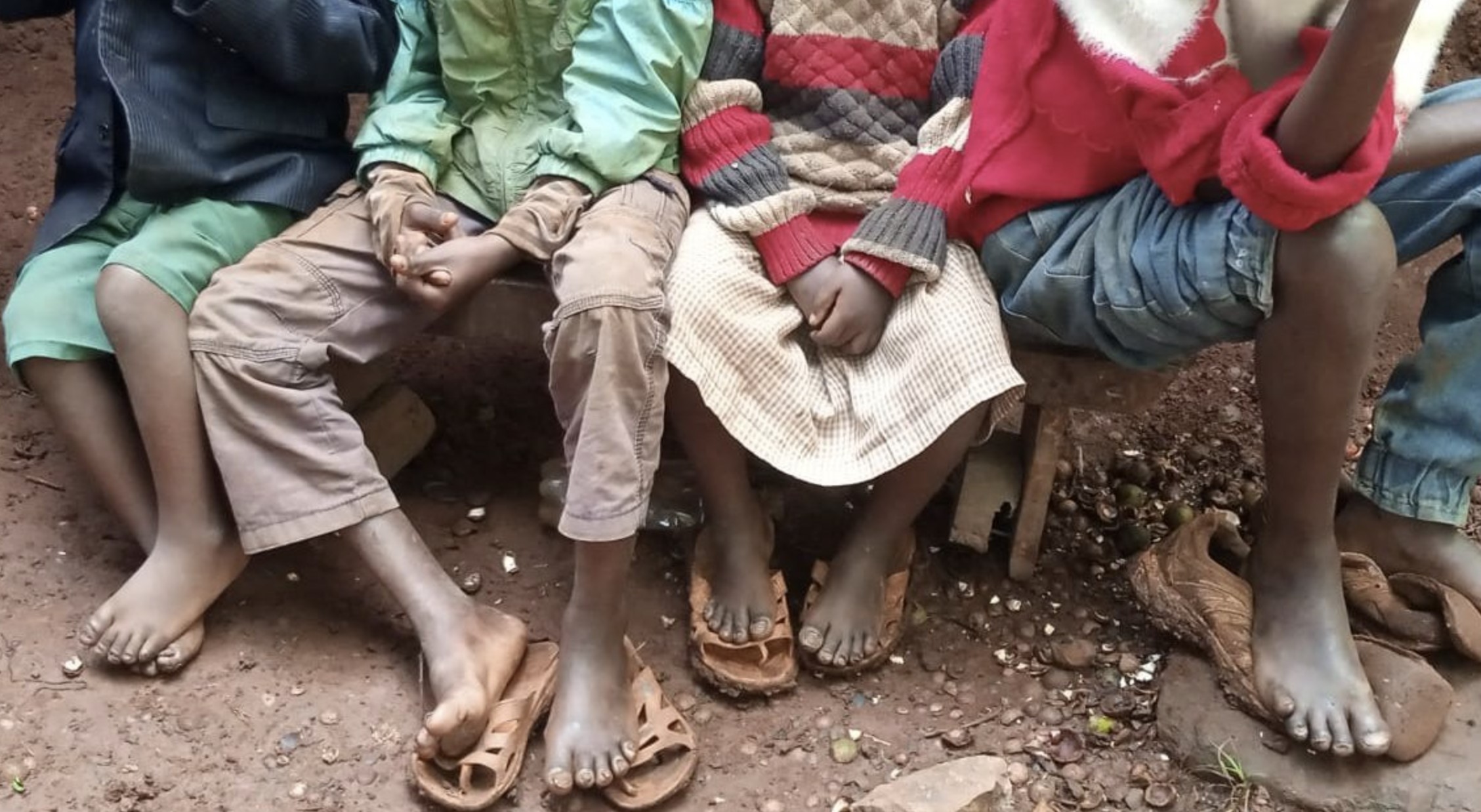 Children infested with jiggers. Until now, the tools available to fight jiggers have been limited. Treatment mostly involves painful physical removal of fleas, crude antiseptics, and chemicals that can be ineffective or harmful.
Children infested with jiggers. Until now, the tools available to fight jiggers have been limited. Treatment mostly involves painful physical removal of fleas, crude antiseptics, and chemicals that can be ineffective or harmful.
In a world-first accomplishment, Kenyan researchers have cracked the complete genetic make up of a jigger’s engine.
This engine, known as the mitochondrial DNA, is a small but powerful part of the flea’s DNA. It controls how the flea’s body makes the energy it needs to move, grow, and stay alive.
The scientists said they can now figure out how to turn off the engine and stop the flea in its tracks - stopping its burrowing and breeding in people’s bodies.
The discovery was made by scientists at the Kilifi-based Kemri Wellcome Trust Research Programme (KWTRP) and the KEMRI-Centre for Geographic Medicine Research Coast among other institutions.
Lead researchers Brian Bartilol and Martin Rono told The Star this discovery opens new possibilities for better treatments and control tools.
“For example, targeting the flea’s energy production system, which relies on specific genes in its mitochondria, could lead to new pesticides or medicines that are more effective and less harmful to humans and animals. Combining genetic research with other biological studies can help identify vulnerabilities in fleas at different stages of their life cycle, allowing for smarter, more precise control methods,” they said.
“Jigger” is the common name for the tiny sand flea that causes tungiasis, a painful and neglected disease caused when female jigger fleas burrow into the skin, especially of the feet.
The embedded fleas swell, lay eggs, and then trigger intense itching, open sores, and bacterial infections.
The Ministry of Health says about two million people in Kenya suffer from jigger infestations, and nearly ten million are at risk.
Right now, there is no special medicine that cures jigger infestations directly.
Bartilol said mitochondrial DNA is inherited maternally,
making it ideal not only for understanding how a jigger’s energy system works,
but also for mapping where jigger populations originate and how they spread.
The scientists traced the ancestry of Kenyan jigger fleas back to Brazil. This supports evidence that jigger fleas were introduced to Africa during maritime trade between the 17th and 19th centuries.
This global journey of fleas from South America to Africa underlines the need for international surveillance and collaborative response strategies.
“It’s important for Kenya and other countries to work
together by sharing flea samples and genetic data. This international
cooperation can reveal how fleas are moving across borders, identify new
introductions, and help prevent local outbreaks, especially as modern
transportation makes global movement easier than ever,” he said.
Until now, the tools available to fight jiggers have been limited. Treatment mostly involves painful physical removal of fleas, crude antiseptics, and chemicals that can be ineffective or harmful.
Chemical approaches can be expensive, unavailable locally, or carry risks. With the genome defined, researchers aim to develop local, cost-effective, and safer solutions that target the parasite precisely.
The scientists also suggested important policy steps for Kenya.
They said the government should strengthen its surveillance systems by routinely analysing flea genetics, build local laboratories and expertise, and work more closely with international partners to share data.
“Investing in research to develop new tools based on genetic information is crucial. By doing all this, Kenya can stay ahead of flea spread, protect its people better, and move toward more sustainable and targeted solutions to control tungiasis,” they said.
The research findings are available in a paper titled, “The complete mitochondrial genome of Tunga penetrans and insights into flea phylogeny”.
It has not been published in a journal but is available on the preprint server Biorxiv.
The co-authors are Maureen W. Mburu, Joel Owaret, Cheryl Andisi, Isabella Oyier, Marta Maia, and George Githinji all of the KEMRI-Wellcome Trust Research Programme. Others are Simon Muriu of Pwani University, Lynne Elson of the University of Oxford, and Joseph Mwangangi of KEMRI-Centre for Geographic Medicine Research Coast.
They scientists collected fleas from ten study participants. They then crushed the fleas using a pestle and mortar and the DNA was extracted using the Qiagen Blood and tissue kit and sequenced.
The prevalence of tungiasis in Africa is at 33 per cent, with a higher prevalence in East Africa (34.2 per cent) compared to West Africa (32.3 per cent).
In Kenya, poor people bear the greatest burden due to poor living conditions, inadequate sanitation and proximity to domestic animals, which are also major flea carriers.
Recent evidence shows upgrading earthen floor with affordable, cement stabilised soil can significantly reduce the disease incidence.











